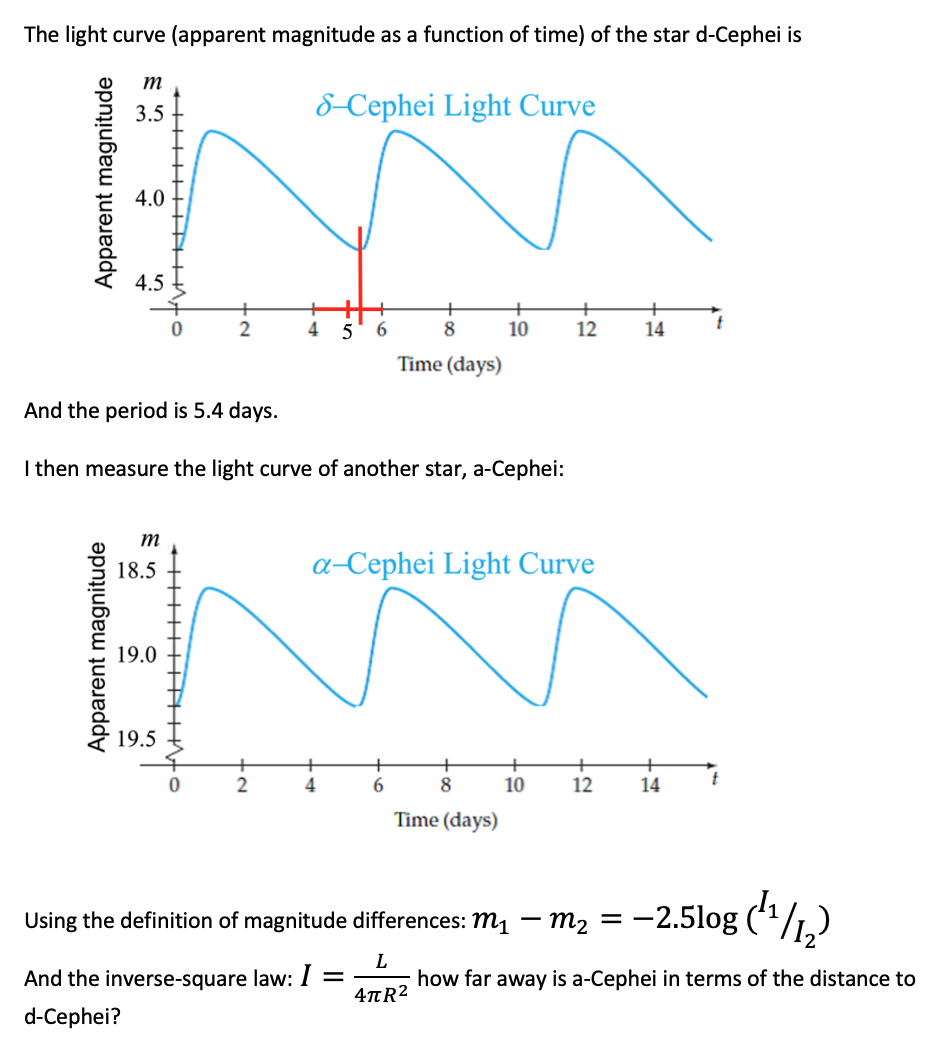The light curve (apparent magnitude as a function of time) of the star d-Cephei is 3.5 8-Cephei Light Curve 4.0 4.5 + 10 4 6. 8. 12 14 Time (days) And the period is 5.4 days. I then measure the light curve of another star, a-Cephei: m 18.5 a-Cephei Light Curve 19.0 19.5 10 12 14 Time (days) Using the definition of magnitude differences: m1 – m2 = –2.5log L And the inverse-square law: I = how far away is a-Cephei in terms of the distance to 4TR² d-Cephei? Apparent magnitude Apparent magnitude + II HINIY
The light curve (apparent magnitude as a function of time) of the star d-Cephei is 3.5 8-Cephei Light Curve 4.0 4.5 + 10 4 6. 8. 12 14 Time (days) And the period is 5.4 days. I then measure the light curve of another star, a-Cephei: m 18.5 a-Cephei Light Curve 19.0 19.5 10 12 14 Time (days) Using the definition of magnitude differences: m1 – m2 = –2.5log L And the inverse-square law: I = how far away is a-Cephei in terms of the distance to 4TR² d-Cephei? Apparent magnitude Apparent magnitude + II HINIY
Related questions
Question
As2

Transcribed Image Text:The light curve (apparent magnitude as a function of time) of the star d-Cephei is
m
3.5
8-Cephei Light Curve
4.0
4.5
+
8
6.
10
12
14
Time (days)
And the period is 5.4 days.
I then measure the light curve of another star, a-Cephei:
18.5
a-Cephei Light Curve
19.0
19.5
4
6
10
12
14
Time (days)
Using the definition of magnitude differences: m1 – m2 = -2.5log
And the inverse-square law: 1 =
how far away is a-Cephei in terms of the distance to
4TR2
d-Cephei?
Apparent magnitude
Apparent magnitude
Expert Solution
This question has been solved!
Explore an expertly crafted, step-by-step solution for a thorough understanding of key concepts.
Step by step
Solved in 3 steps with 3 images
